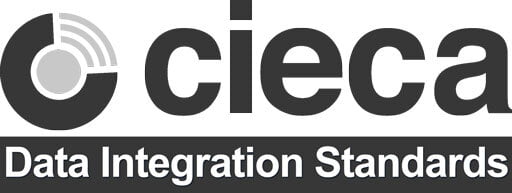Over the past year, CIECA’s Architecture Committee has been creating new standards for the collision industry—CIECA API Standards (CAPIS). In October, the committee completed the first version of CAPIS. During the October CIECAST webinar, Dan Webster, CIECA’s Architecture Chair and a Principal Architect at Enlyte, shared information about the work being done on CAPIS.
"The next generation of collision industry standards is a big deal for those of us in the Architecture Committee who have been working on it and we’re excited to announce that the first version of CAPIS was included in the second standards release of the year, the 2022R2," said Webster.
The following information is based on highlights from the webinar.
Q: The first version of CAPIS was completed in October as part of the second standards release of the year, the 2022R2. Can you tell us what it includes?
A: Similar to what we did with the BMS when it was launched in 2003, the first version of CAPIS has a humble number, CAPIS 0.0.1.
CIECA has been studying these technologies, particularly JavaScript Object Notation (JSON), for the last nine years. Since 2020, we've spent time and energy focusing on open APIs and have now come out with a process for moving forward. I think it’s working pretty effectively.
We developed a CAPIS JSON Style Guide, which explains how we will use JSON notation to represent the familiar messages that we’ve been passing back and forth for decades.
We also developed JSON Schema Guidelines, which include the standard way we are going to use codes, how to represent arrays, etc.
The Architecture Committee developed the CAPIS data dictionary with what is called a “Zero-Based Budgeting” approach. Rather than focusing on backward compatibility, we are only using the elements that the standards committees see as necessary.
Instead of the artificial construct we adopted when designing BMS XML where we would break down every object into further sub-objects until you never had a list of more than ten or 11, the current practice is to have your list be as long as needed in a flat structure. This is known as flattening. The buzzword we use is “with no extraneous levels of hierarchy.” What you'll see in these messages is much longer lists of data elements and many fewer artificial levels of hierarchy.
At the very center of CAPIS are the Code Lists for JSON. This will help us support various data elements in the future.
CIECA has created Test Instances/Examples to test the concepts of the APIs and the data dictionary. It has been an obsession of the CIECA Architecture Committee for quite a while now. The idea is to show what the message will look like once the needed interface is put into the format we’ve specified. So far, we have approximately 100 test instances we’ve been using to develop CAPIS.
We started out by limiting the scope to three important objects, vehicle, parties and claim that we've had since the development of the EMS. Each is described in the JSON schema and JSON format and then combined into messages. (Mike Hastings will discuss this in more detail in a future article.)
The idea is that by limiting the scope to a vehicle and payment parties—owner, claimant, insured body shop—you can initiate a claim from one trading partner system to the other and synchronize the various components and values. We built an open API Standard for it called VehiclePartiesClaimAPI schemas.
Q: How will CAPIS help the industry?
A: CAPIS will help the collision industry integrate API Business Solutions much like the EMS and BMS did years ago. The data standards and code lists will help developers integrate common data standards with many partners in the industry.
Q: What will the Architecture Committee be working on next?
A: Our next project is focusing on the data dictionary. This includes flattening all the BMS aggregates and setting up in a way that all BMS data elements can be used for CAPIS. Following that, CIECA members will be able to use the data dictionary for REST (representational state transfer) or API services.
Q: Can you tell us about other highlights of the 2022R2?
A: In October, we completed the 49th release of the BMS. Nine new data elements were added to the schemas and messages. These included adding:
- RefClaimNum element to AssignmentAddRq, AssignmentCanRq and AssignmentChgRq
- LossTypeCode and LossTypeDesc elements to LossInfo aggregate
- EstimateKeyDateTime element to EstimateEvent aggregate
- DeductibleCreditAmt element to DeductibleInfo aggregate
- BettermentCreditInd element to Coverage aggregate
- PreviousPaymentAmt element to ClaimInfo aggregate
- OriginalValuationAmt element to ValuationType aggregate
- ValuationAmtJudgmentInd element to ValuationType aggregate
- UnitNum element to Vehicle aggregate
One of the most important things CIECA is involved with is standardizing codes. In the latest release, we made nine additions to the Code Lists. These included the new certification type that the Certified Automotive Parts Association (CAPA) came up with. Many in the industry will be familiar with it, O: [CAPA Tier 1].
Note: At the Collision Industry Red Carpet Awards Breakfast this year at the SEMA Show in Las Vegas, NV, three members of CIECA's Architecture received an Outstanding Contribution Award for their work developing CAPIS. They included Dan Webster, Andy Bober, a software engineer at Entegral, and Mike Hastings, product manager at Car-Part.com.
